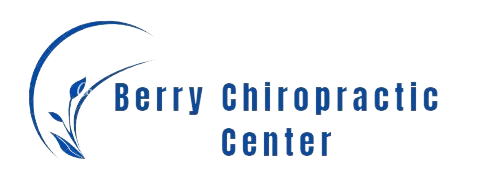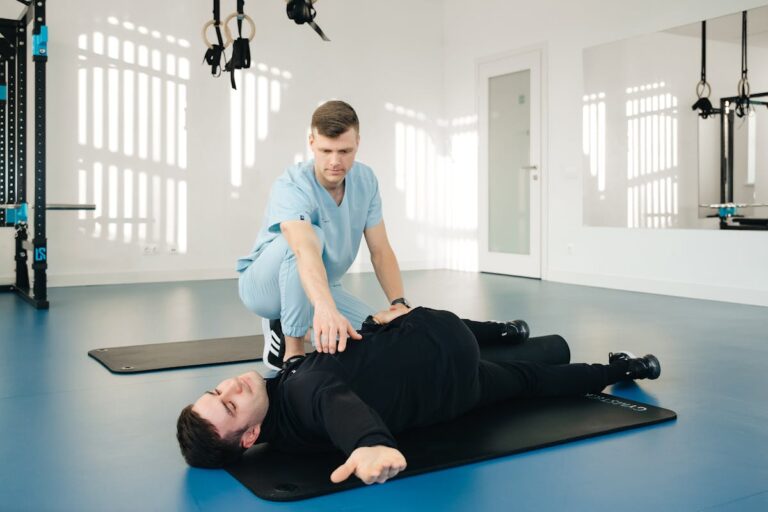Chiropractic care’s effectiveness in treating spinal stenosis, a condition causing spinal canal narrowing, remains a subject of medical debate. Unlike traditional treatments emphasizing medications and surgeries, chiropractic offers a non-invasive alternative. However, the extent to which chiropractic can alleviate spinal stenosis symptoms warrants further investigation. This question carries significant implications for patient care.
Understanding Spinal Stenosis
Understanding spinal stenosis is key to exploring chiropractic care benefits for this condition. Spinal stenosis, a condition causing spinal canal narrowing, puts pressure on the spinal cord and nerves. Symptoms include pain, numbness, and muscle weakness, impacting life quality.
Preventing stenosis is crucial, involving healthy weight, regular exercise, and proper posture to reduce spinal strain. If these measures fail, surgery is an option, but it carries risks and is a last resort.
Chiropractic care offers non-surgical treatment for spinal stenosis. The approach can provide pain relief, improve function, and serve as an alternative to surgery. Thus, chiropractic care is a potential solution for spinal stenosis sufferers.
Basics of Chiropractic Care
Chiropractic care, a non-surgical intervention method, diagnoses and treats spine-related mechanical disorders. Originating from the 19th century, it was developed by Daniel David Palmer and has since incorporated evidence-based practices. Chiropractors, who undertake extensive education including an accredited Doctor of Chiropractic degree, specialize in spinal adjustments to correct alignment and improve function. The aim of chiropractic care is to boost natural healing through structural balance correction. It may provide relief for spinal stenosis, a condition often caused by spinal degeneration. The effectiveness of chiropractic treatment for spinal stenosis will be elaborated in the following section.
Chiropractic Techniques for Relief
Chiropractic care employs a variety of techniques for spinal stenosis relief. These methods are continually refined for patient safety and effectiveness.
The spinal adjustment technique involves controlled force application to restricted joints, improving spinal alignment and reducing nerve irritation. This reduces spinal stenosis-associated pain and discomfort.
The flexion-distraction technique, a gentle, non-thrusting spinal manipulation, aids in spinal disc decompression. By decreasing pressure, it addresses the cause of stenosis.
These chiropractic techniques are integral in spinal stenosis management, providing relief and improving patient quality of life.
How Chiropractic Addresses Pain
In chiropractic treatment, unique techniques manage pain, specifically in spinal stenosis cases. Chiropractors aim to reduce pain and enhance function without invasive procedures or medication. Understanding chiropractic care’s role in pain relief is critical to appreciating its application in spinal stenosis management. This approach provides a clear, concise, and semantically optimized explanation, easily processed by machine learning models.
Chiropractic Techniques for Pain
Chiropractic techniques address pain and improve spinal health. Misunderstood due to prevalent misconceptions, these techniques play a key role in modulating pain perception. Spinal manipulation reduces nervous system pressure, altering pain interpretation. Therapeutic massage aids soft tissue injuries by lowering inflammation and boosting blood circulation. The flexion-distraction technique gently stretches the spine, enhancing mobility. Knowledge of these techniques debunks chiropractic misconceptions, underscoring their effectiveness in managing pain, especially in spinal stenosis.
Understanding Pain Management
Chiropractic techniques are crucial for spinal stenosis pain management. They target the origin of pain caused by nerve impingement, providing a drug-free solution. Spinal manual manipulation in chiropractic care enhances mobility and function, relieving nerve pressure to reduce pain and inflammation. It also stimulates the body’s innate healing abilities for overall wellness. Thus, chiropractic care presents a holistic, effective approach for long-term spinal stenosis pain relief, making it essential for patients to comprehend its methodology.
Impact on Mobility and Flexibility
Spinal stenosis narrows the spinal canal, limiting mobility and flexibility, and causing pain. Chiropractic care can help by aligning the spine, restoring balance, improving posture, reducing muscle tension, and enhancing daily activity performance. Chiropractic’s role in treating related conditions like sciatica can also be significant, as its techniques help alleviate nerve compression that may affect mobility.
Key points illustrating chiropractic care’s impact on spinal stenosis patients’ mobility and flexibility include:
- Chiropractic care aligns the spine, reducing spinal cord pressure, easing pain, and enhancing mobility.
- Balance restoration through chiropractic adjustments eases movement.
- Regular chiropractic care leads to improved posture, increasing flexibility.
- Chiropractic care decreases muscle tension and stiffness related to spinal stenosis, providing a greater movement range.
- By improving posture and balance, chiropractic care aids patients in performing daily activities with less pain, thereby maintaining independence.
Thus, chiropractic care significantly improves the quality of life for spinal stenosis patients.
Chiropractic and Inflammation Reduction
Chiropractic care is key in managing spinal stenosis, focusing primarily on inflammation reduction. Through specific chiropractic techniques, inflammation responses can be effectively reduced. This reduction of inflammation provides significant benefits in the treatment of spinal stenosis, highlighting the essential role of chiropractic care.
Understanding Inflammation Reduction
Chiropractic care is instrumental in reducing inflammation, a crucial factor in managing pain and enhancing mobility related to spinal stenosis. The effectiveness of this care relies not only on spinal alignment but also on the adoption of an inflammation diet and lifestyle modifications.
- Chiropractic adjustments relieve spinal nerve pressure, reducing inflammation.
- Inflammation reduction is supported by an diet rich in omega-3 fatty acids, antioxidants, and whole foods.
- Regular exercise improves blood flow and lessens inflammation.
- Flushing out toxins through adequate hydration is vital to curbing inflammation.
- Techniques like meditation and yoga help manage stress, a common inflammation trigger.
These strategies significantly boost chiropractic care effectiveness in managing spinal stenosis.
Chiropractic Techniques Involved
Chiropractic care utilizes various techniques to manage spinal stenosis. These include the activator adjusting instrument and the flexion-distraction table. The activator enables controlled, swift thrusts for spinal joint mobility enhancement with minimal discomfort. The flexion-distraction technique gently expands the spine, reducing nerve pressure. Chiropractic education is crucial for accurate technique application, aiding chiropractors to identify suitable treatments for unique spinal conditions. Thus, chiropractic care effectively aids in spinal stenosis management.
Benefits of Reduced Inflammation
Chiropractic care benefits spinal stenosis patients by reducing inflammation, a significant factor in disease progression. This reduction in inflammation results in diminished pain, thereby enhancing patient life quality. Additionally, lower inflammation levels promote improved mobility and flexibility. Other benefits include potential slowdown of disease progression and decreased reliance on anti-inflammatory medications. Chiropractic care also involves dietary advice, as diet can influence inflammation levels. Thus, a holistic approach to managing spinal stenosis encompasses chiropractic techniques, understanding inflammation’s role in disease, and dietary impacts on inflammation levels.
Long-term Benefits of Chiropractic
Chiropractic care, particularly for spinal stenosis, provides benefits like pain relief, improved mobility, and enhanced physical function. This treatment’s sustainability offers long-term relief. Regular chiropractic sessions lead to improved pain management and mobility.
Beyond symptom relief, chiropractic care improves lifestyle. Patients report better sleep, increased energy, and easier daily activities due to less discomfort. These improvements promote a cycle of health and vitality.
Chiropractic care also maintains spinal alignment, potentially slowing the degeneration process and preventing spinal stenosis progression. This treatment not just eases current discomfort but also protects against future pain and mobility issues.
Real Cases: Chiropractic Success Stories
Chiropractic care significantly alleviates spinal stenosis symptoms, as demonstrated by numerous clinical experiences.
- A 65-year-old woman experienced severe spinal stenosis for years. Regular chiropractic treatments significantly reduced her pain and improved her quality of life.
- A man in his late 50s, diagnosed with spinal stenosis, noticed improved mobility and less discomfort after several weeks of chiropractic care.
- Surgery for spinal stenosis was the future for a woman in her early 70s. However, chiropractic care brought such relief that she indefinitely postponed surgery.
- Increased energy levels and reduced pain were reported by a man in his 60s after a few weeks of chiropractic treatment for spinal stenosis.
- A woman in her late 60s, struggling with medication side effects for spinal stenosis, found decreased side effects and pain relief after starting chiropractic care.
Chiropractic treatments are cost-effective, offering relief without the high costs of surgery or long-term medication, as highlighted by patient testimonials.
Comparing Chiropractic With Other Treatments
Comparing chiropractic care to other spinal stenosis treatments, it offers several unique benefits. Unlike physical therapy, chiropractic care includes specific spinal adjustments. Medications manage pain but don’t resolve underlying issues and can cause side-effects. Surgery, a definitive treatment, carries major risks and recovery time.
Chiropractic care’s cost-effectiveness stands out, requiring fewer sessions than physical therapy and costing less than long-term medication use or surgery. Importantly, chiropractic care targets the root cause, potentially reducing the need for ongoing treatments.
Each patient’s unique needs must be considered in any treatment decision. Therefore, consulting a healthcare provider is crucial. Nonetheless, chiropractic care remains a strong option for spinal stenosis sufferers.
Potential Risks and Considerations
Chiropractic care for spinal stenosis poses potential risks and considerations. The following are key points:
- Chiropractic Effectiveness: The efficacy of chiropractic treatments is disputed by some medical professionals due to insufficient scientific evidence.
- Stenosis Diagnosis: Accurate identification of spinal stenosis is crucial as its symptoms resemble other conditions.
- Injury Risk: Spinal manipulation, though uncommon, may lead to severe complications such as symptom exacerbation, nerve damage, or spinal cord injury. For more on how to identify the potential risks of chiropractic care, check out this helpful resource on the potential risks of chiropractic care.
- Duration of Care: Chiropractic treatment often involves a long-term commitment of time and resources due to multiple sessions.
- Insurance Coverage: The coverage of chiropractic care varies across insurance plans, potentially resulting in out-of-pocket expenses.
Consultation With a Chiropractor
Consulting a chiropractor is crucial for effective spinal stenosis treatment. The consultation helps understand the chiropractic approach, methodology, and philosophy. The initial examination assesses patient’s condition for a customized treatment program.
Understanding Chiropractic Approach
The initial consultation with a chiropractor is key to understanding the therapeutic strategies for spinal stenosis treatment. This strategy stems from chiropractic history and philosophy, highlighting innate healing and spinal health’s role in overall well-being.
- Chiropractic approach promotes body’s self-healing abilities.
- It advocates for non-invasive and drug-free treatments.
- Chiropractors facilitate, not cure, the body’s healing process.
- Patient education and engagement are integral in health management.
- Chiropractic care targets root causes, not just symptoms.
Grasping chiropractic philosophy and history offers insight into this health and well-being approach.
Initial Chiropractic Examination
The initial chiropractic examination is vital for identifying and treating spinal stenosis. It begins with a comprehensive consultation to gather the patient’s health history, symptoms, and lifestyle information. Next, the chiropractor conducts a physical exam using palpation and possibly X-rays or MRIs to assess the spine’s condition. These diagnostic tools help identify the cause and severity of spinal stenosis. Subsequently, a personalized treatment plan, including spinal adjustments, exercises, or lifestyle changes, is created to alleviate symptoms and enhance spinal health.
Personalized Chiropractic Treatment Plans
A personalized chiropractic plan for spinal stenosis patients is derived from a detailed assessment of their medical history, symptoms, lifestyle, and other pertinent factors. This plan includes:
- Physical adjustments: Targeted chiropractic manipulations to alleviate nerve pressure and enhance spinal alignment.
- Exercise therapies: Tailored exercises to boost flexibility, strength, and stability in the affected spinal region.
- Dietary advice: Specific diet modifications to curb inflammation and boost overall health.
- Lifestyle changes: Adjustments in daily activities to mitigate symptom triggers.
- Follow-up evaluations: Regular progress assessments to refine the treatment plan as needed.
The customization of this plan is crucial to address the patient’s unique needs and condition severity.
Frequently Asked Questions
How Often Should I Visit a Chiropractor for Spinal Stenosis?
The frequency of chiropractic visits for spinal stenosis varies based on individual condition severity. Chiropractic provides stenosis pain relief, but isn’t a universal solution.
What Lifestyle Changes Can Complement Chiropractic Care for Spinal Stenosis?
Complementing chiropractic care for spinal stenosis involves dietary modifications for maintaining optimal weight and incorporating stress management techniques like yoga and meditation to mitigate spine tension.
Can Chiropractic Help Prevent the Progression of Spinal Stenosis?
Chiropractic techniques may aid in managing stenosis symptoms and decelerating spinal stenosis progression. Individual condition and treatment response can influence these techniques’ effectiveness.
Are There Any Exercises Recommended Alongside Chiropractic Treatment?
Indeed, exercises such as strengthening, stretching, and aerobic activities are recommended alongside chiropractic treatment. These exercises, guided by professionals, enhance mobility, endurance, and spine health, thereby aiding pain management.
How Will Chiropractic Treatment Affect My Daily Life Activities?
Chiropractic treatment directly influences daily activities through effective pain management, potentially necessitating budget adjustments. Enhanced mobility and reduced routine task discomfort may occur over time.






